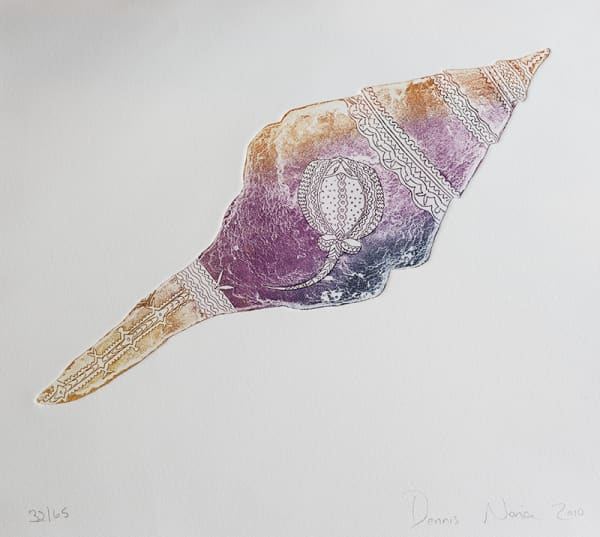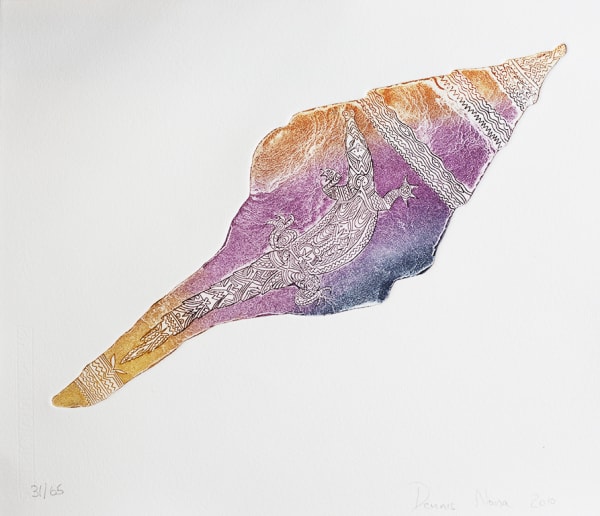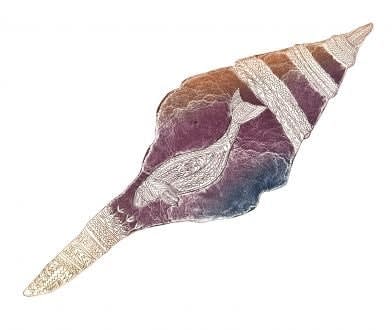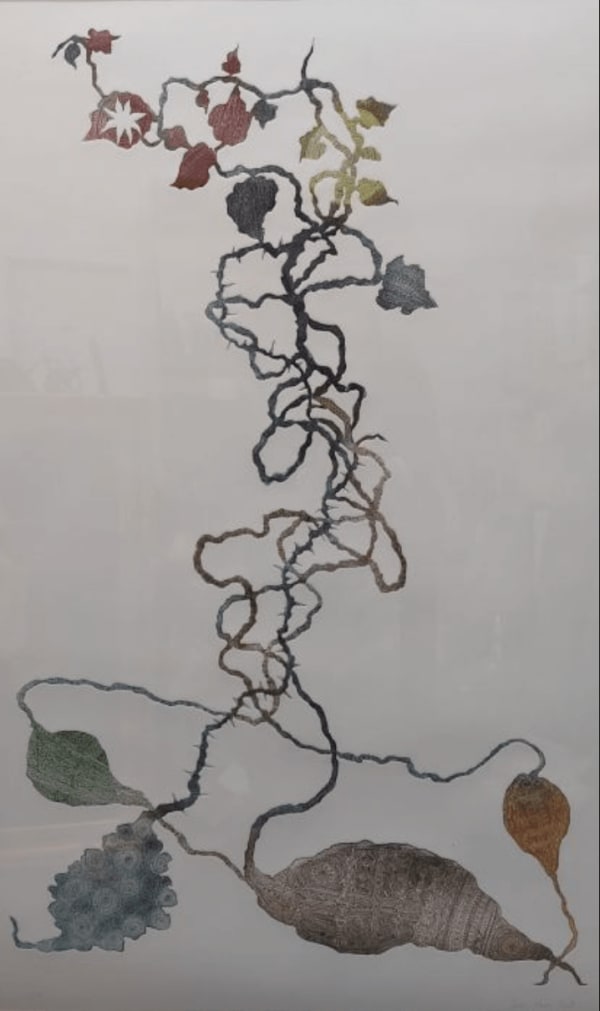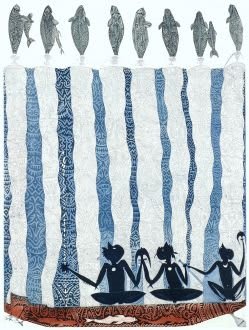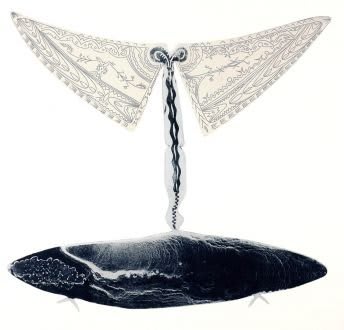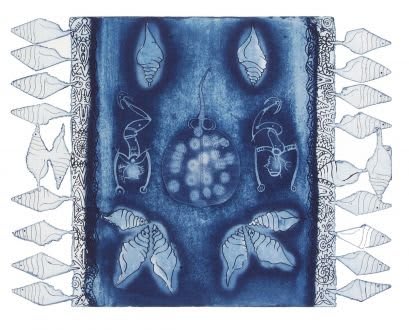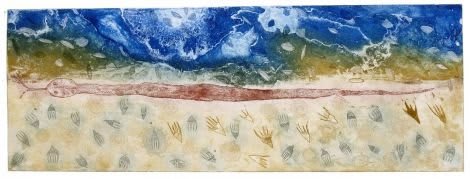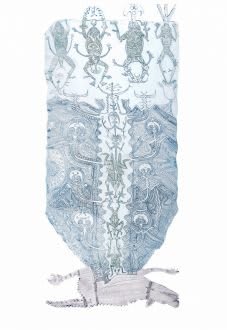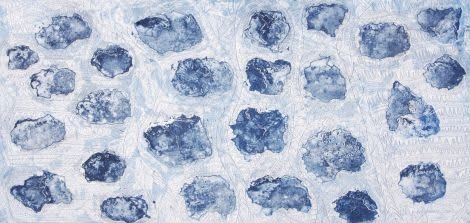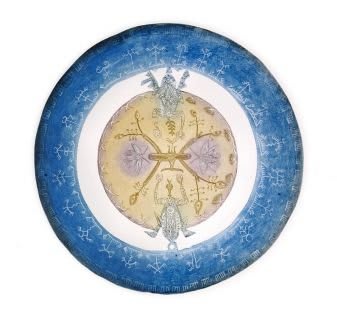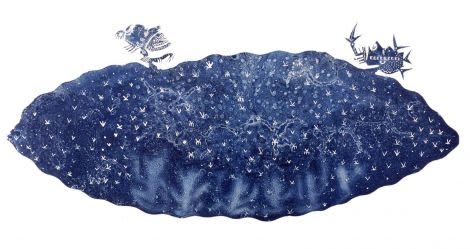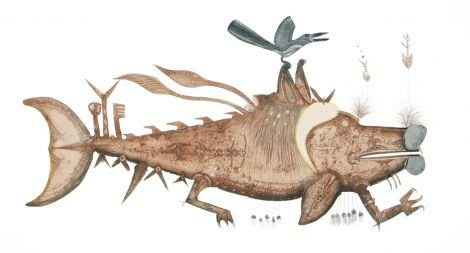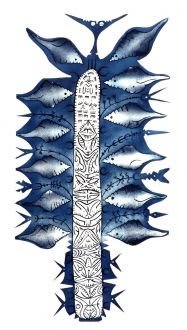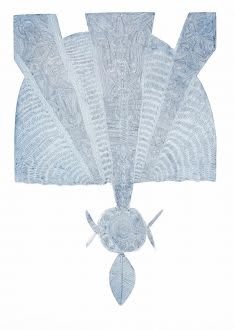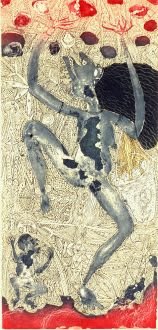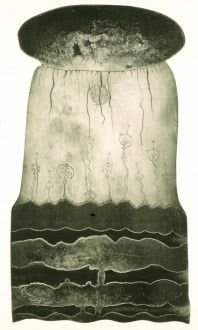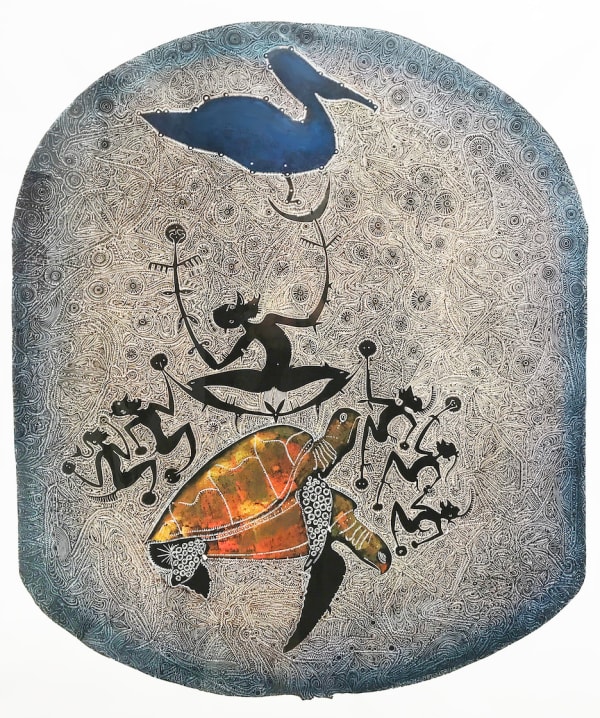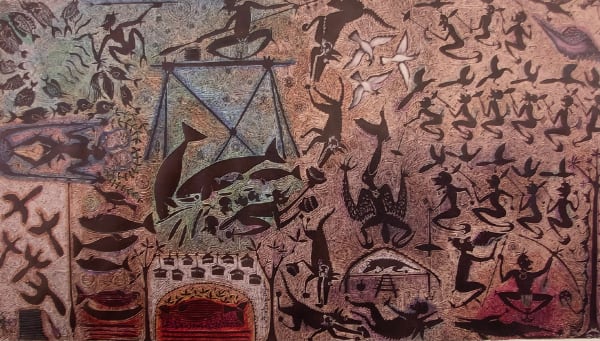Dennis Nona
Dennis Nona is widely acknowledged as one the most important Torres Strait Islander artists.Born on Badu Island in 1973 he was taught as a young boy the traditional craft of woodcarving. This skill has been developed and translated into the incredibly intricate and beautiful linocuts, etchings and sculptures created by the artist since the commencement of his art practice in 1989.
Nona pioneered the development of the highly intricate linocut prints unique to the Torres Strait Islands. He has documented, in a vivid visual form, the ancient myths and legends of his island and the wider Torres Strait that had previously been transmitted by oral story telling and dance.
He uses a more graphic way of storytelling. Instead of a work based on a single image like that of the traditional Torres Strait Islander art, he introduced many, following what was being done by mainland Aboriginal artists. In this way he could relate an entire narrative in one single work with all the characters and events in one image. To link the work he introduced a matrix of delicately lined clan patterning, so binding the entire story to its place of origin. Since this breakthrough, the intricate designs and bold figurative imagery created by printmakers like Nona, have given local culture a vital reinvigoration.
Today they are central to a cultural revival and elders now refer to them to help them to relate ancient stories to others. These were fast fading from common knowledge and being lost to new generations of Islanders suffering the cultural dislocation often imposed by the impact European settlement and influence.
Within Nona’s work there is a celebration of island myths and legends, of how humans, animals, plants and landscape took their meaning from epic or magical events in the past. It was a culture where fighting was glorified and warriors were held in high esteem. Legendary heroes wore distinctive local headdress and masks. They played drums and used objects associated with their ritual ceremonies and dances. It was a culture of head hunters, cannibalism and raiding parties that attacked homes built in tree tops. It was a society where men, women, sorcerers and witches came to their final grief by being transformed into sea creatures or cast into the sea to become the islands and rocky outcrops evident throughout the Western Torres Strait Islands today.
The attraction of Nona’s work lies in the way he has drawn on the rich traditions of Torres Strait Islander carving which he has transferred to linocut and more recently etchings and sculpture. Far more flexible in their visual reference and expressive means than that of traditional work from the Torres Strait Islands, his works are highly skilled compositions. Each work expresses a powerful materiality that comes from exquisitely crafted hand-made surfaces, a complex of finely chiselled hand made lines which are then coloured before printing.
Curator of Australian Prints at the National Gallery of Australia, Roger Butler, says that Nona’s work represents a trend by artists to explore the physicality of the print making process instead of just the instant art making of digital processes: He comments: “He (Nona) sits there with a lot of lino and with a very sharp little chisel and cuts out those incredibly detailed little lines and gouge marks… That’s really taking it back to the processes of (German Renaissance artist) Albrecht Durer, a simple technique that makes VERY complex images.”
The artist holds a Diploma of Art from Cairns TAFE, a Diploma of Visual Arts in Printmaking from the Institution of Arts, Australian National University, Canberra and a Master of Arts in Visual Arts, Queensland College of Art, Griffith University, Brisbane.
His work can be seen in the collections of most of the major Australian art institutions and in several important overseas collections. These include the National Gallery of Australia; Queensland Art Gallery; National Gallery of Victoria; Art Gallery of New South Wales, Art Gallery of South Australia; Museum of Contemporary Art, Sydney; British Museum, London; Victoria and Albert Museum, London; Cambridge University Museum UK; National Museum of Scotland, Edinburgh, Scotland and the Museum of American Indian Arts, USA.
Dennis Nona is represented in the Aboriginal art collections of most major Australian art institutions and in several important overseas collections. These include the National Gallery of Australia; Queensland Art Gallery; National Gallery of Victoria; Art Gallery of New South Wales, Art Gallery of South Australia; Museum of Contemporary Art, Sydney; Victoria and Albert Museum, London; Cambridge University Museum UK and the Museum of American Indian Arts, USA.
-
 Dangal Agada-le - Dugong, 2010
Dangal Agada-le - Dugong, 2010 -
 Tupmul Agada-le - Stingray, 2010
Tupmul Agada-le - Stingray, 2010 -
 Kodal Agada-le - Crocodile, 2010
Kodal Agada-le - Crocodile, 2010 -
 Umai Agada-le - Dog, 2010
Umai Agada-le - Dog, 2010 -
 Dangal agada-le (dugong), 2010
Dangal agada-le (dugong), 2010 -
 Samu Agada-le - Cassowary, 2010
Samu Agada-le - Cassowary, 2010 -
 Dugam, 2008
Dugam, 2008 -
 Guthah au dhangala, 2007
Guthah au dhangala, 2007 -
 Dhangalau id, 2007
Dhangalau id, 2007 -
 Sazi, 2007
Sazi, 2007 -
 Gapu Dhangul, 2007
Gapu Dhangul, 2007 -
 Tupmul award, 2007
Tupmul award, 2007 -
 Kaiwai, 2007
Kaiwai, 2007 -
 Kanara, 2007
Kanara, 2007 -
 Airka, 2007
Airka, 2007 -
 Tupmul award, 2007
Tupmul award, 2007 -
 Ubarrau pyetutai, 2007
Ubarrau pyetutai, 2007 -
 Karral, 2007
Karral, 2007 -
 Kubuwai, 2007
Kubuwai, 2007 -
 Saruwai, 2007
Saruwai, 2007 -
 Umai ar dhangalau kuik, 2007
Umai ar dhangalau kuik, 2007 -
 Kwod, 2007
Kwod, 2007 -
 Dibadib, 2007
Dibadib, 2007 -
 Gabau zinul, 2007
Gabau zinul, 2007 -
 mamoose, 2007
mamoose, 2007 -
 Wamadai, 2007
Wamadai, 2007 -
 Uzi pui, 2007
Uzi pui, 2007 -
 Warti dhoga, 2007
Warti dhoga, 2007 -
 goiman pui, 2007
goiman pui, 2007 -
 wakasu, 2007
wakasu, 2007 -
 Sarup, 2007
Sarup, 2007 -
 Awai Tithuyil Badu Island Story - The Pelican, 2006
Awai Tithuyil Badu Island Story - The Pelican, 2006 -
 Sessere, 2005
Sessere, 2005 -
 Untitled, 2001
Untitled, 2001 -
 INTERIOR SHOT, Awai Tithuyil Badu Island Story - The Pelican
INTERIOR SHOT, Awai Tithuyil Badu Island Story - The Pelican


